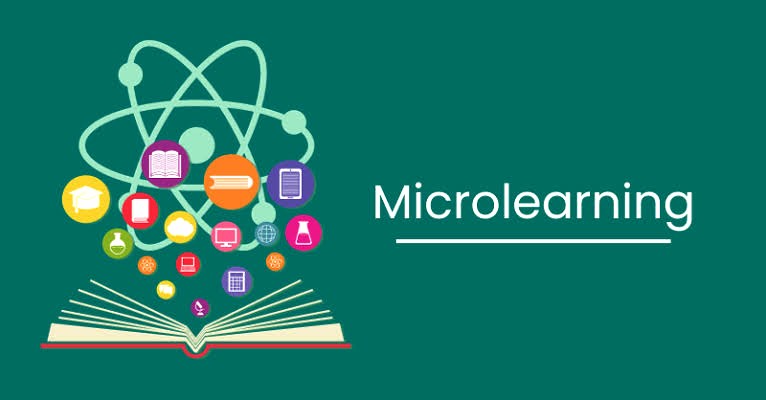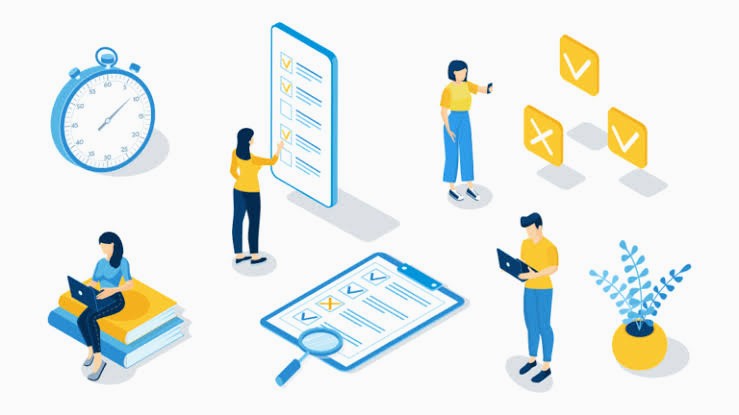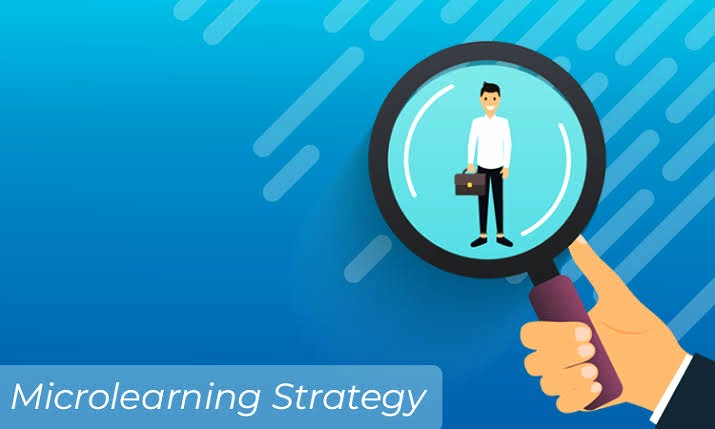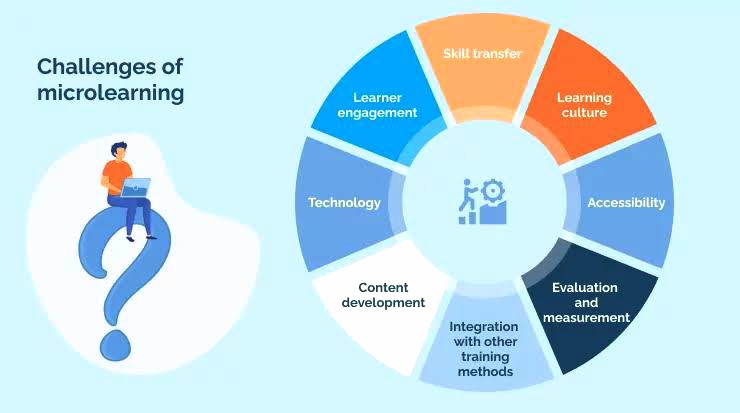
Microlearning: Definition, Examples and Platforms

In the dynamic landscape of education and professional development, microlearning has emerged as a powerful methodology for effective learning. This article explores the concept of microlearning, its benefits, applications across various sectors, and its role in shaping modern learning strategies.
What is Microlearning?

Microlearning refers to delivering educational content in small, specific units that stand independently or combine with others to meet a learning objective. Specifically, these units are typically brief, ranging from a few minutes to about twenty minutes. In contrast to traditional long-form learning, it focuses on targeted learning outcomes within short sessions.
Benefits of Microlearning

1. Enhances Retention and Engagement
Microlearning enhances retention by delivering content in bite-sized pieces that learners find easier to digest and recall. Moreover, research suggests that shorter, focused learning sessions improve retention rates compared to longer, more extensive learning formats. Additionally, by breaking down complex information into smaller modules, it keeps learners engaged and reduces cognitive overload.
2. Offers Flexibility and Accessibility
One of the key advantages of microlearning is its flexibility and accessibility. Learners can access microlearning’s modules anytime, anywhere, using various devices such as smartphones, tablets, or laptops. Additionally, this accessibility is particularly beneficial for busy professionals who prefer learning on-the-go or during short breaks. Moreover, it integrates easily into existing learning management systems (LMS), making it a scalable solution for organizations.
3. Cost-Effectiveness
Microlearning can be a cost-effective alternative to traditional training methods. By focusing on specific learning objectives in short sessions, organizations can optimize resources and reduce training costs associated with lengthy classroom sessions or extensive e-learning modules. Furthermore, the modular nature of microlearning allows for quick updates and revisions, ensuring content remains relevant and up-to-date without significant additional costs.
Applications of Microlearning

1. Corporate Training and Development
In the corporate sector, microlearning increasingly supports employee training and development. Organizations deploy microlearning’s modules to deliver crucial information, such as compliance updates, product knowledge, or soft skills training. For example, sales teams benefit from short modules on new product features, enabling quick acquisition and application of knowledge before client interactions. This just-in-time learning approach enhances employee performance and productivity.
2. Education and Academia
Microlearning transforms traditional education settings. Educators supplement classroom learning with microlearning modules that reinforce key concepts or provide additional resources for students. For instance, students preparing for exams access short videos or interactive quizzes that help them review specific topics efficiently. As a result, it promotes active learning, allowing students to engage with content at their own pace, leading to deeper understanding and retention of information.
3. Skill Development and Continuous Learning
Microlearning plays a pivotal role in fostering continuous learning. Professionals seeking new skills or updating existing ones leverage microlearning platforms to access relevant courses or tutorials. The modular structure of it, allows learners to focus on specific skills or competencies, making it easier to track progress and achieve learning goals over time. Consequently, continuous learning through microlearning enables individuals to stay competitive in rapidly evolving industries and adapt to changing job requirements.
Implementing Effective Microlearning Strategies

1. Designing and Delivering Content
Effective microlearning depends on well-designed content that aligns with specific learning objectives. Consequently, content creators focus on delivering concise, interactive modules that capture learners’ attention and facilitate knowledge retention. Furthermore, incorporating multimedia elements such as videos, infographics, or interactive simulations enhances engagement and effectively reinforces key concepts.
2. Personalization and Adaptability
Personalizing microlearning’s experiences significantly enhances effectiveness. By tailoring content to individual learning preferences and skill levels, organizations ensure learners receive relevant information that meets their specific needs. Additionally, adaptive microlearning platforms use learner data and feedback to customize learning paths, offering personalized recommendations and assessments that promote continuous improvement.
3. Assessment and Feedback Mechanisms
Assessment plays a crucial role in measuring the effectiveness of microlearning initiatives. For instance, incorporating quizzes, assessments, or scenario-based simulations allows learners to apply newly acquired knowledge and receive immediate feedback on their performance. Additionally, analyzing learner data from assessments helps identify strengths, weaknesses, and areas for improvement, thereby enabling organizations to refine microlearning strategies and optimize learning outcomes.
Challenges and Considerations

While microlearning offers numerous benefits, organizations may face challenges when implementing microlearning’s initiatives:
1. Content Curation and Quality
Ensuring quality and relevance of microlearning content requires careful curation and instructional design expertise. Content creators must condense information effectively without sacrificing accuracy or depth. Additionally, updating and maintaining a library of its modules requires ongoing effort to keep content current and aligned with organizational goals.
2. Technical Infrastructure and Support
Effective deployment of microlearning relies on robust technical infrastructure and support systems. Therefore, organizations must ensure their platforms are compatible with various devices and accessible to all learners, including those with limited internet connectivity. Furthermore, providing technical support and training for users enhances adoption rates and ensures a seamless learning experience.
3. Engagement and Motivation
Maintaining learner engagement and motivation can be challenging in microlearning environments. For instance, short attention spans and competing priorities may impact learners’ commitment to completing microlearning modules. To address this, incorporating gamification elements, rewards, or social learning features can incentivize participation and create a sense of achievement, thereby fostering a positive learning experience.
Future Trends and Innovations

The future of microlearning is poised for further innovation and integration with emerging technologies:
1. Artificial Intelligence (AI) and Machine Learning
AI-powered algorithms personalize microlearning experiences by analyzing learner behavior and preferences. Specifically, adaptive learning platforms use AI to recommend relevant content, adapt learning paths in real-time, and provide targeted interventions based on learner performance data. Moreover, machine learning algorithms enhance content recommendations and predictive analytics, thereby improving learning outcomes and efficiency.
2. Augmented Reality (AR) and Virtual Reality (VR)
AR and VR technologies offer immersive learning experiences that enhance engagement and retention in microlearning contexts. By simulating real-world scenarios and environments, AR and VR enable learners to practice skills, explore complex concepts, and receive immediate feedback in a safe and interactive manner. Integrating AR and VR into its platforms expands learning possibilities and enriches learning experiences across various industries.
3. Mobile Learning and Micro-Moments
The prevalence of mobile devices facilitates microlearning opportunities during micro-moments throughout the day. Consequently, learners can access short learning modules during commutes, breaks, or downtime, thereby maximizing learning efficiency and flexibility. Furthermore, mobile-first microlearning strategies leverage mobile-friendly formats and responsive design to deliver seamless learning experiences across devices, effectively catering to the preferences of modern learners.
Conclusion

Microlearning represents a paradigm shift in how individuals acquire knowledge and skills in today’s fast-paced world. Specifically, by delivering targeted learning content in small, accessible units, it enhances retention, engagement, and learning outcomes across diverse sectors. Consequently, as organizations embrace digital transformation and prioritize continuous learning, microlearning emerges as a scalable, cost-effective solution that meets the evolving needs of learners and enhances organizational agility.
In conclusion, the widespread adoption of microlearning underscores its potential to revolutionize education, training, and professional development in the years to come. By leveraging innovative technologies, personalized learning experiences, and effective instructional design, organizations can harness the power of microlearning to empower learners, drive performance, and achieve strategic objectives in a rapidly changing global landscape.
Related Topics
An Article on Artificial Intelligence
Final Year Project Topics in Computer Science and IT
Project Topics: A Guide for Final Year Students
Top 10 Best Universities in the World
Empowering Minds, Enriching Societies: Unveiling the Transformative Power of Education


